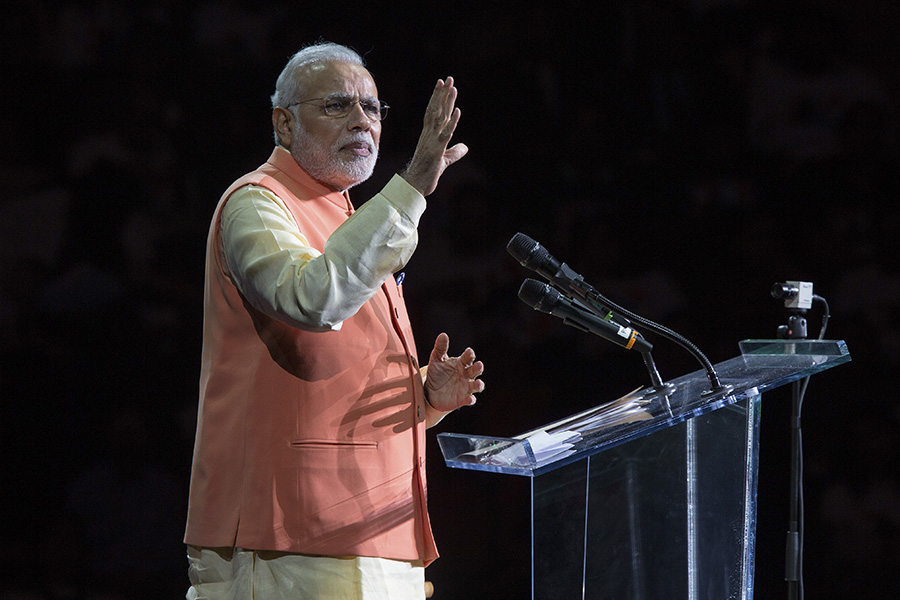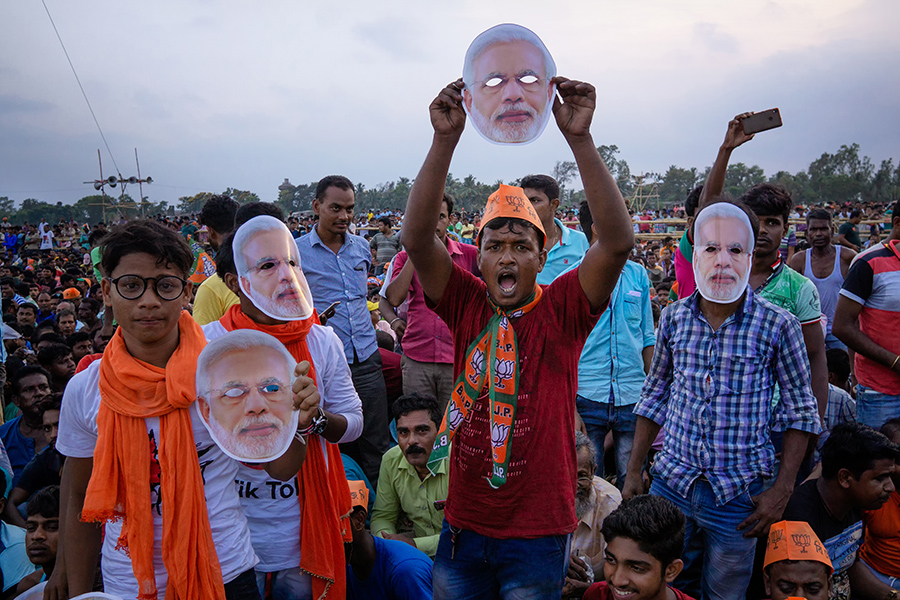
Narendra Modi appears headed for another term as India's Prime Minister
According to all of the major exit polls, Modi's brand of brawny Hindu nationalist politics played well among the 900 million registered voters

FILE -- Prime Minister Narendra Modi of India at Madison Square Garden in New York, Sept. 28, 2014. Modi, one of the most powerful and divisive leaders India has produced in decades, appeared headed for re-election, according to exit polls released May 19, 2019, at the end of mammoth parliamentary elections. (Ruth Fremson/The New York Times)
Modi seems to have emerged from the largest democratic vote in human history relatively unscathed by growing complaints across India about joblessness and distress on farms.
According to all of the major exit polls, Modi’s brand of brawny Hindu nationalist politics, coupled with his efforts to project a strong image of India abroad, played well among the 900 million registered voters. If the voter surveys prove accurate, Modi is positioned to govern with a strong hand for five more years.
To the very end, he campaigned as a passionate Hindu. Modi spent Saturday night and Sunday morning, the last day of the election, praying at a Hindu shrine and meditating in a remote Himalayan cave.
At least seven exit polls released by Indian media organizations Sunday night predicted that Modi’s party, the Bharatiya Janata Party, or BJP, and its allies would win at least 280 of the 545 seats in the lower house of Parliament, empowering them to choose the next prime minister.
If the actual results back the polls up, it will be a much more dominating performance than many analysts had thought was possible. Official results are expected Thursday.
“The exit polls are surprising,” said Sudha Pai, a former political science professor at Jawaharlal Nehru University in New Delhi, the capital. Modi’s social media efforts and the fact that the opposition was divided delivered bigger-than-expected gains, she said.
Similar exit polls in other recent Indian elections have accurately predicted the broader trends.
The exit polls this time forecast that the Indian National Congress, the leading opposition party, would do marginally better than its stunning defeat in the last elections in 2014. But it still seemed destined to remain a distant second.
Rahul Gandhi, Congress’ leader and the scion of an Indian political dynasty, had tried to pick up votes by appealing to communal harmony and minority rights. But that seemed no match for Modi’s aggressive and well-financed campaign machine, which enjoys the fervent support of many grassroots groups within India’s Hindu majority.
“One thing we know for sure is that Modi remains incredibly popular despite everything that’s happened in the last five years,” said Milan Vaishnav, a South Asia expert at the Carnegie Endowment for International Peace. “Nothing really sticks to him.”
The elections were a six-week affair. Voting was conducted in stages, with different parts of the country voting at different times. The first votes were cast in mid-April and the last ones were Sunday. All results will be released together, on Thursday.
Indian officials moved from constituency to constituency across this vast landscape, from high snowy mountains to lush tropical isles in the Andaman Sea.
As news of the exit polls spread, the people most distressed were India’s minorities. Under Modi’s government, mob violence against Muslims, who make up about 14%, and lower caste Hindus has increased, and the bloodshed often goes unpunished.
Modi’s brand of politics, rooted in Hindu supremacist groups that believe Hindus are the rightful rulers of India, has polarized this heterogeneous country, raising fear and tensions.

People at a rally for Prime Minster Narendra Modi’s Bharatiya Janata Party in Diamond Harbour, West Bengal State, India, May 15, 2019. India has seen less violence than usual during this election season, which ends Sunday. But political and sectarian anger left at least one village scarred. (Arka Dutta/The New York Times)
The big losses that some political analysts had predicted in northern India do not seem to have materialized.
Like any exit polls, those in India are imperfect, but their accuracy has improved in recent years.
The major exit polls in 2014 correctly predicted a win for the BJP-led coalition. In 2009, exit polls accurately forecast that Congress would gain the most seats, though the data underestimated the number ultimately won by the Congress alliance.
The current exit polls were conducted by Indian research and survey organizations, many with decades of experience, which partnered with news media outlets. According to the polling organizations, the sample size for each exit poll varied from 40,000 voters to 2 million.
Some analysts have cautioned that exit polls may overstate Modi’s support because some people would be scared to say they voted against him. But overall, political scientists said they seemed reliable.
“In the majority of the cases, exit polls have depicted the true picture,” said Josukutty Cheriantharayil Abraham, director of the survey research center at the University of Kerala. “It may not be correct in terms of the number of seats or vote percentage, but it could definitely show the trends.”
Gandhi did not comment on the exit polls. After the voting ended, he complained in a Twitter message that India’s election commission’s “capitulation before Mr. Modi and his gang is obvious to all Indians.”
In contrast, the BJP posted a cartoon on Twitter of Modi crushing a scattered opposition with a giant lawn mower as spectators give him the thumbs-up.
“With this,” the illustration read, “the opportunistic hodgepodge is over.”
©2019 New York Times News Service
Post Your Comment














